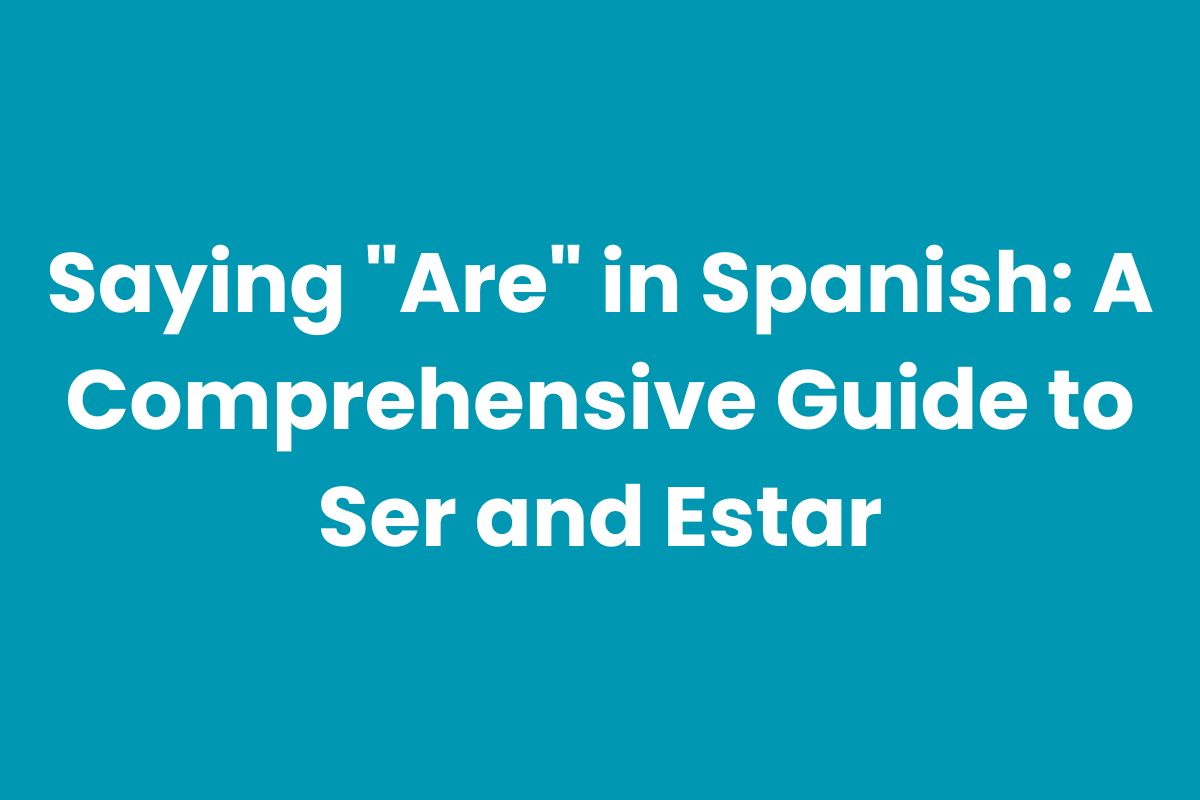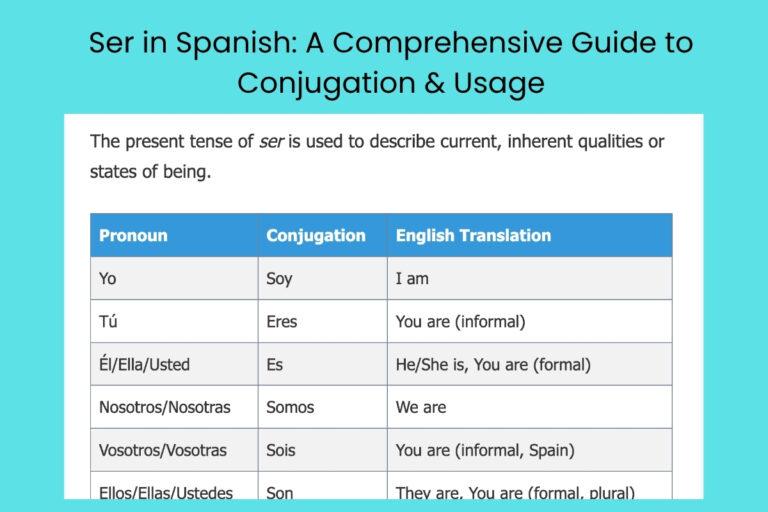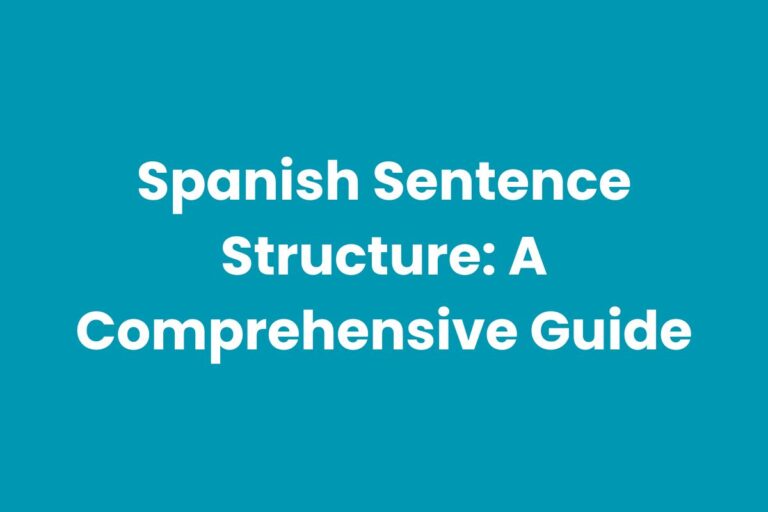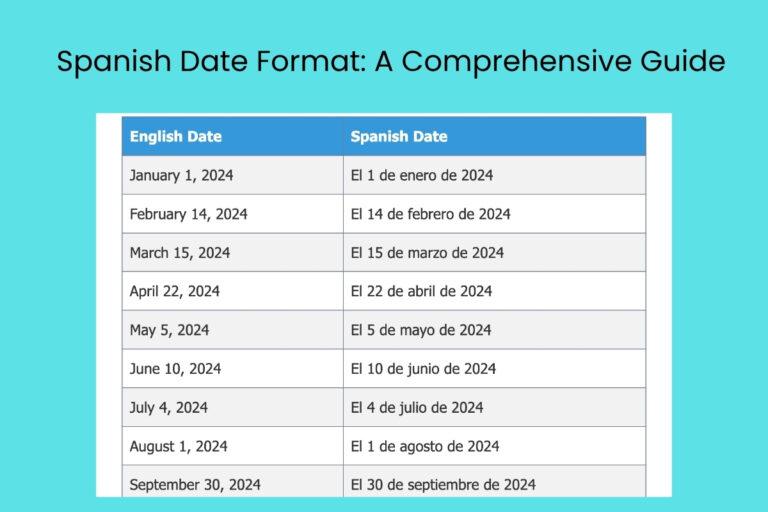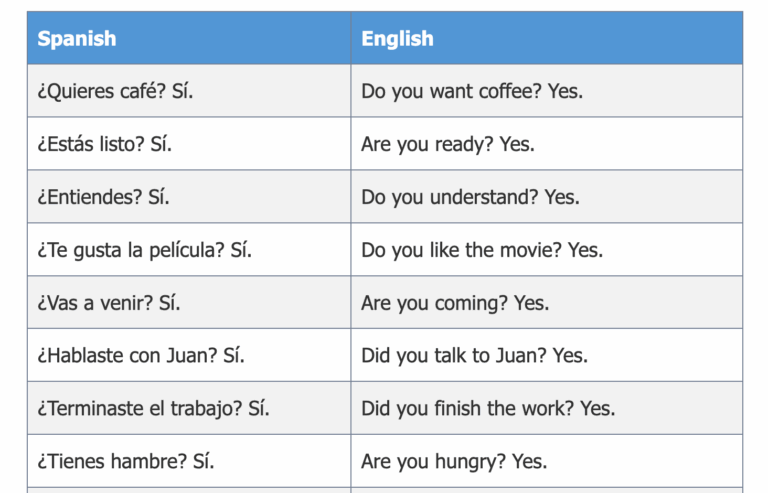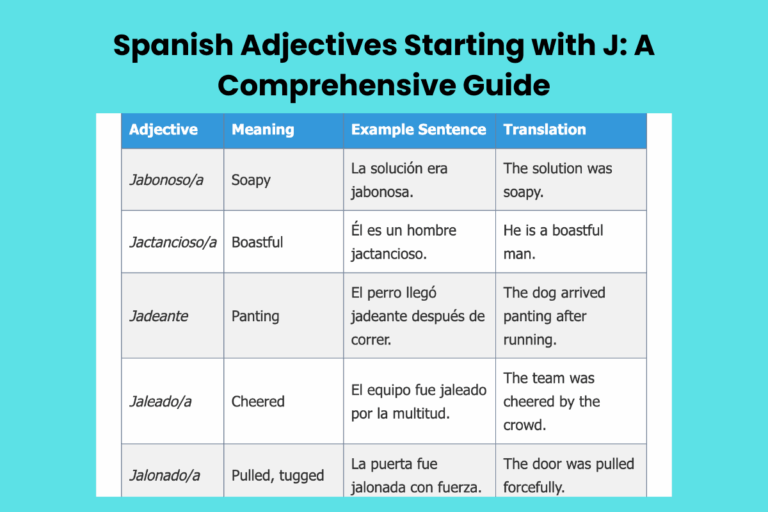Saying “Are” in Spanish: A Comprehensive Guide to Ser and Estar
Understanding how to express “are” in Spanish is fundamental to mastering the language. Unlike English, Spanish uses two different verbs, ser and estar, both of which can translate to “to be.” Choosing the correct verb depends on the context and the specific characteristic you are describing. This distinction can be tricky for English speakers, but with a clear understanding of their uses, you can significantly improve your Spanish fluency and accuracy. This article will provide a comprehensive guide to using ser and estar, complete with examples, rules, and practice exercises.
This guide is ideal for beginner to intermediate Spanish learners who want to solidify their understanding of these crucial verbs. It will also benefit those who have struggled with the ser vs. estar distinction in the past. By the end of this article, you’ll be equipped with the knowledge and practice needed to confidently use ser and estar in various contexts.
Table of Contents
- Definition: Ser and Estar
- Structural Breakdown: Conjugation and Usage
- Types and Categories of Usage
- Examples of Ser and Estar
- Usage Rules for Ser and Estar
- Common Mistakes with Ser and Estar
- Practice Exercises
- Advanced Topics: Nuances and Exceptions
- Frequently Asked Questions
- Conclusion
Definition: Ser and Estar
In Spanish, the concept of “to be” is divided into two verbs: ser and estar. Both verbs translate to “to be” in English, but they are used in different contexts to convey different meanings. Understanding the distinction between these two verbs is essential for accurate and fluent Spanish communication.
Ser is generally used to describe permanent or inherent characteristics, identities, origins, and relationships. It defines what something *is* in its essence. Ser is often associated with qualities that are unlikely to change.
Estar, on the other hand, is used to describe temporary states, conditions, locations, and feelings. It indicates how something *is* at a particular moment or in a specific situation. Estar is associated with qualities that are subject to change.
Structural Breakdown: Conjugation and Usage
To use ser and estar correctly, it’s crucial to understand their conjugations in the present tense. Here’s a breakdown of the conjugations:
| Pronoun | Ser (to be) | Estar (to be) |
|---|---|---|
| Yo (I) | Soy | Estoy |
| Tú (You – informal) | Eres | Estás |
| Él/Ella/Usted (He/She/You – formal) | Es | Está |
| Nosotros/Nosotras (We) | Somos | Estamos |
| Vosotros/Vosotras (You – informal plural, Spain) | Sois | Estáis |
| Ellos/Ellas/Ustedes (They/You – formal plural) | Son | Están |
The correct usage of ser and estar depends on the context. Ser is used with nouns and adjectives that describe inherent qualities, while estar is used with adjectives that describe temporary states or conditions. For example:
- Soy estudiante. (I am a student.) – Ser is used to describe a profession, which is a defining characteristic.
- Estoy cansado. (I am tired.) – Estar is used to describe a temporary state of being.
Types and Categories of Usage
Ser: Permanent and Defining Characteristics
Ser is used to describe qualities that are generally considered permanent or inherent to a person, place, or thing. These can include:
- Origin: Where someone or something is from.
- Nationality: A person’s country of origin.
- Physical Description: Characteristics like height, hair color, and build.
- Personality Traits: Enduring aspects of someone’s character.
- Profession/Occupation: What someone does for a living.
- Relationships: Connections between people.
- Time and Date: When describing the day, date, or time.
- Possession: Indicating ownership.
- Material: What something is made of.
Estar: Temporary States and Conditions
Estar is used to describe temporary states, conditions, or locations. These can include:
- Location: Where someone or something is located.
- Emotional State: How someone is feeling.
- Physical Condition: Temporary physical states like illness or tiredness.
- Present Progressive Tense: Describing an action in progress (using the gerund).
- Resulting State: The condition resulting from an action.
- With certain adjectives: To indicate a change in the normal or expected condition.
Examples of Ser and Estar
Ser Examples
Here are some examples illustrating the use of ser in different contexts.
| Example | Translation | Category |
|---|---|---|
| Soy de España. | I am from Spain. | Origin |
| Ella es americana. | She is American. | Nationality |
| Él es alto y moreno. | He is tall and dark-haired. | Physical Description |
| Somos simpáticos y amables. | We are kind and friendly. | Personality Traits |
| Usted es profesor. | You are a teacher. (formal) | Profession/Occupation |
| Ellos son mis amigos. | They are my friends. | Relationships |
| Hoy es lunes. | Today is Monday. | Time and Date |
| Es la una de la tarde. | It is one o’clock in the afternoon. | Time and Date |
| El libro es de Juan. | The book belongs to Juan. | Possession |
| La mesa es de madera. | The table is made of wood. | Material |
| Soy inteligente. | I am intelligent. | Characteristic |
| Eres mi hermano. | You are my brother. | Relationship |
| Ella es doctora. | She is a doctor. | Profession |
| Nosotros somos estudiantes. | We are students. | Profession |
| Vosotros sois españoles. | You are Spanish. | Nationality |
| Ellos son altos. | They are tall. | Physical Description |
| La casa es grande. | The house is big. | Characteristic |
| El problema es difícil. | The problem is difficult. | Characteristic |
| La fiesta es divertida. | The party is fun. | Characteristic |
| La vida es bella. | Life is beautiful. | Characteristic |
| El coche es rojo. | The car is red. | Characteristic |
| La película es interesante. | The movie is interesting. | Characteristic |
| El café es mi favorito. | The coffee is my favorite. | Characteristic |
| El examen es mañana. | The exam is tomorrow. | Time |
| La reunión es a las tres. | The meeting is at three. | Time |
| El concierto es el sábado. | The concert is on Saturday. | Time |
Estar Examples
Here are some examples illustrating the use of estar in different contexts.
| Example | Translation | Category |
|---|---|---|
| Estoy en casa. | I am at home. | Location |
| Ella está contenta. | She is happy. | Emotional State |
| Él está enfermo. | He is sick. | Physical Condition |
| Estamos comiendo. | We are eating. | Present Progressive |
| La puerta está cerrada. | The door is closed. | Resulting State |
| El agua está fría. | The water is cold. (It wasn’t before) | Change in Condition |
| Estoy trabajando. | I am working. | Present Progressive |
| Estamos cansados. | We are tired. | Emotional State |
| Él está leyendo. | He is reading. | Present Progressive |
| Ella está durmiendo. | She is sleeping. | Present Progressive |
| Estoy ocupado. | I am busy. | State of Being |
| Estás equivocado. | You are wrong. | State of Being |
| Ella está lista. | She is ready. | State of Being |
| Nosotros estamos preparados. | We are prepared. | State of Being |
| Vosotros estáis nerviosos. | You are nervous. | Emotional State |
| Ellos están preocupados. | They are worried. | Emotional State |
| La tienda está abierta. | The store is open. | State of Being |
| El restaurante está lleno. | The restaurant is full. | State of Being |
| La ciudad está lejos. | The city is far. | Location |
| El libro está aquí. | The book is here. | Location |
| El vaso está roto. | The glass is broken. | Resulting State |
| La comida está caliente. | The food is hot. | State of Being |
| La ventana está sucia. | The window is dirty. | State of Being |
| El jardín está floreciendo. | The garden is blooming. | Progressive Action |
| El bebé está creciendo. | The baby is growing. | Progressive Action |
| El cielo está nublado. | The sky is cloudy. | State of Being |
Ser vs. Estar Examples
The difference between ser and estar can be subtle, but understanding it is crucial for accurate communication. Here are some examples that highlight the contrast:
| Example | Translation | Explanation |
|---|---|---|
| María es inteligente. | María is intelligent. | Ser describes her inherent intelligence. |
| María está inteligente hoy. | María is being intelligent today. | Estar implies that she is acting intelligently today, perhaps unusually. |
| El café es frío. | Coffee is cold. | Ser describes the inherent nature of the coffee (perhaps it’s supposed to be an iced coffee). |
| El café está frío. | The coffee is cold. | Estar describes the current state of the coffee (it was hot, but now it’s cold). |
| Juan es aburrido. | Juan is boring. | Ser describes Juan’s personality. |
| Juan está aburrido. | Juan is bored. | Estar describes Juan’s current emotional state. |
| La manzana es verde. | The apple is green. | Ser indicates the apple’s color, a characteristic. |
| La manzana está verde. | The apple is unripe. | Estar indicates the apple is unripe, a temporary state. |
| Mi padre es enfermo. | My father is sickly. | Ser implies my father is generally unhealthy. |
| Mi padre está enfermo. | My father is sick. | Estar indicates my father is currently ill. |
| Soy listo. | I am clever (by nature). | Ser implies an inherent quality. |
| Estoy listo. | I am ready. | Estar implies a state of preparedness. |
| Ella es delgada. | She is thin (naturally). | Ser describes her natural build. |
| Ella está delgada. | She is thin (currently). | Estar implies she has lost weight. |
| El es bueno. | He is a good person. | Ser describes a person’s moral character. |
| El está bueno. | He is attractive/tasty. | Estar describes a temporary or subjective perception. |
| La naranja es agria. | The orange is sour (by nature). | Ser describes the inherent taste of the orange. |
| La naranja está agria. | The orange is sour (it tastes sour right now). | Estar describes the current taste of the orange. |
| La puerta es cerrada. | The door is closed (by nature/design). | Ser is rarely used this way and would be unusual, implying the door is always closed. |
| La puerta está cerrada. | The door is closed (right now). | Estar describes the current state of the door. |
| El es vivo. | He is lively (by nature). | Ser describes a person’s energetic personality. |
| El está vivo. | He is alive. | Estar describes the state of being alive. |
Usage Rules for Ser and Estar
Rules for Using Ser
Remember to use ser for:
- Descriptions: Physical and personality traits. Ella es alta. (She is tall.)
- Origin and Nationality: Where someone is from. Soy de México. (I am from Mexico.)
- Profession: What someone does. Él es médico. (He is a doctor.)
- Relationships: Connections between people. Somos amigos. (We are friends.)
- Time and Date: When telling time or the date. Es la una. (It is one o’clock.)
- Possession: Indicating ownership. Es mi libro. (It is my book.)
- Material: What something is made of. La mesa es de madera. (The table is made of wood.)
- Essential Qualities: Qualities that define something. El agua es líquida. (Water is liquid.)
Rules for Using Estar
Remember to use estar for:
- Location: Where someone or something is located. Estoy en la casa. (I am at home.)
- Temporary States: Conditions that are subject to change. Estoy cansado. (I am tired.)
- Emotions: How someone is feeling. Ella está feliz. (She is happy.)
- Present Progressive: Actions in progress. Estamos comiendo. (We are eating.) Note: This uses the structure: *estar* + gerund (present participle ending in -ando or -iendo).
- Resulting States: The condition resulting from an action. La puerta está cerrada. (The door is closed.)
- With certain adjectives: To indicate a change in the normal or expected condition, or a subjective opinion. El café está muy bueno hoy. (The coffee is very good today.)
Common Mistakes with Ser and Estar
One of the most common mistakes is using ser when estar is required, and vice versa. Here are some examples of common errors and their corrections:
| Incorrect | Correct | Explanation |
|---|---|---|
| Yo soy cansado. | Yo estoy cansado. | Cansado (tired) is a temporary state, so use estar. |
| Ella está de España. | Ella es de España. | De España (from Spain) indicates origin, so use ser. |
| Nosotros somos en la casa. | Nosotros estamos en la casa. | En la casa (at home) indicates location, so use estar. |
| El libro está de Juan. | El libro es de Juan. | De Juan (belonging to Juan) indicates possession, so use ser. |
| Hoy es feliz. | Hoy estoy feliz. (If *I* am happy) or Hoy es un día feliz. (Today is a happy day) | Feliz (happy) is an emotion, so use estar when referring to a temporary state. If describing the *day* as happy, use *ser* with the noun *día*. |
| Soy aquí. | Estoy aquí. | Aquí (here) indicates location, so use estar. |
| Eres comprendiendo. | Estás comprendiendo. | Present progressive requires *estar*, not *ser*. |
| El agua es caliente (when you mean currently) | El agua está caliente. | Use estar to describe the water’s current temperature. *Ser* implies it’s always hot. |
Practice Exercises
Exercise 1: Ser or Estar?
Choose the correct verb, ser or estar, to fill in the blank in each sentence.
| Question | Answer |
|---|---|
| 1. Yo ______ estudiante. | Soy |
| 2. Ella ______ en la biblioteca. | Está |
| 3. Nosotros ______ cansados. | Estamos |
| 4. Él ______ alto y delgado. | Es |
| 5. Hoy ______ martes. | Es |
| 6. Ustedes ______ mis amigos. | Son |
| 7. La puerta ______ abierta. | Está |
| 8. El libro ______ de María. | Es |
| 9. Yo ______ feliz. | Estoy |
| 10. Ellos ______ comiendo. | Están |
Exercise 2: Conjugation Practice
Conjugate the verb ser or estar in the present tense to complete each sentence.
| Question | Answer |
|---|---|
| 1. Yo ______ (ser) de Argentina. | Soy |
| 2. Tú ______ (estar) triste. | Estás |
| 3. Él ______ (ser) profesor. | Es |
| 4. Nosotros ______ (estar) en el parque. | Estamos |
| 5. Vosotros ______ (ser) simpáticos. | Sois |
| 6. Ellos ______ (estar) bailando. | Están |
| 7. Usted ______ (ser) mi vecino. | Es |
| 8. Ella ______ (estar) enferma. | Está |
| 9. Yo ______ (estar) leyendo. | Estoy |
| 10. Ellos ______ (ser) estudiantes. | Son |
Advanced Topics: Nuances and Exceptions
While the basic rules for ser and estar are generally consistent, there are some nuances and exceptions to be aware of:
- Adjectives with different meanings: As shown earlier, some adjectives change meaning depending on whether they are used with ser or estar. For example, listo means “clever” with ser, but “ready” with estar.
- Figurative language: In some cases, the choice between ser and estar can be used for stylistic effect or to convey a particular nuance.
- Regional variations: While the core rules remain the same, some regional dialects may exhibit slight variations in usage.
- Passive Voice: *Ser* is used to form the passive voice. For example: *El libro fue escrito por Cervantes.* (The book was written by Cervantes.)
Mastering these nuances requires extensive exposure to the language and careful attention to context. Pay attention to how native speakers use ser and estar in different situations, and don’t be afraid to ask questions when you’re unsure.
Frequently Asked Questions
- Q: How can I remember when to use ser and estar?
A: A helpful mnemonic is DOCTOR and PLACE. DOCTOR stands for Description, Origin, Characteristic, Time, Occupation, and Relationship, which all use ser. PLACE stands for Position, Location, Action, Condition, and Emotion, which all use estar.
- Q: Can an adjective ever be used with both ser and estar?
A: Yes, many adjectives can be used with both verbs, but the meaning changes. For example, aburrido means “boring” with ser and “bored” with estar.
- Q: Is it always clear which verb to use?
A: In most cases, the correct verb is clear based on the context. However, there can be some situations where the choice is more subtle and depends on the intended meaning.
- Q: What is the present progressive tense, and how does it relate to estar?
A: The present progressive tense describes an action in progress. It is formed using estar followed by the gerund (present participle) of the main verb (ending in -ando or -iendo). For example, Estoy comiendo (I am eating).
- Q: Are there any regions where the rules for ser and estar are different?
A: While the fundamental rules are consistent across Spanish-speaking regions, there may be slight variations in usage or preference in certain dialects. However, these variations are generally minor and don’t significantly impact understanding.
- Q: What’s the difference between “ser bueno” and “estar bueno”?
A: “Ser bueno” describes someone as a good person, with good moral character. “Estar bueno,” on the other hand, is often used to describe someone as attractive or good-looking, or to describe food as tasting good (though some may find this usage for people objectifying). The context will usually make the meaning clear.
- Q: How do I use “estar” to describe the weather?
A: While some weather descriptions use *hacer* (e.g., *Hace frío* – It’s cold), *estar* is used with adjectives describing temporary weather conditions. For example, *El cielo está nublado* (The sky is cloudy).
- Q: Can you give more examples of adjectives that change meaning with “ser” and “estar”?
A: Certainly! Consider “orgulloso.” “Ser orgulloso” means to be proud (as a personality trait), while “estar orgulloso” means to feel proud (at a specific moment). Another example is “seguro.” “Ser seguro” means to be safe or secure, while “estar seguro” means to be sure or certain.
- Q: Is there a way to practice distinguishing between “ser” and “estar” more effectively?
A: Immersing yourself in the language is key. Watch Spanish-language movies and TV shows, read books and articles, and listen to podcasts. Pay close attention to how native speakers use “ser” and “estar” in different contexts. Also, try writing your own sentences and having them checked by a native speaker or a language tutor.
- Q: How does the use of “ser” and “estar” relate to the concept of essential vs. accidental properties?
A: That’s a very insightful connection! “Ser” often aligns with essential properties – characteristics that define what something *is* fundamentally. “Estar,” conversely, relates to accidental properties – characteristics that something *happens* to have at a particular time or in a specific circumstance. Thinking in terms of essential vs. accidental properties can provide a deeper understanding of the “ser/estar” distinction.
Conclusion
Mastering the distinction between ser and estar is a crucial step in achieving fluency in Spanish. While it may seem challenging at first, understanding the underlying principles and practicing consistently will enable you to use these verbs accurately and confidently. Remember that ser describes inherent qualities and permanent characteristics, while estar describes temporary states, conditions, and locations.
Continue to practice with examples, exercises, and real-world conversations. Pay attention to the context and the intended meaning, and don’t be afraid to make mistakes and learn from them. With dedication and perseverance, you’ll be well on your way to mastering this essential aspect of Spanish grammar. Keep practicing, and you’ll find that using ser and estar becomes second nature!

